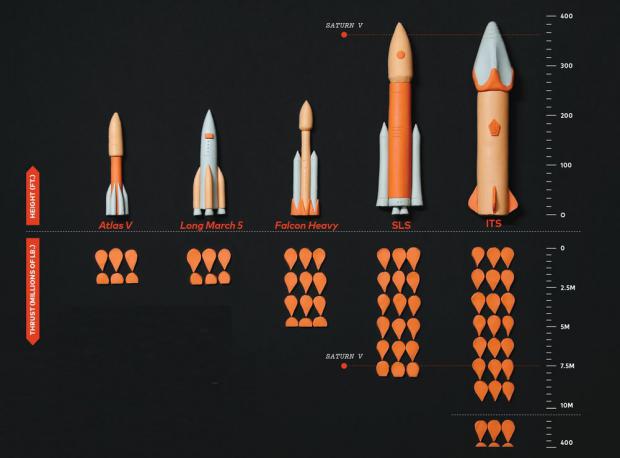
Breaking News
 Trump pardons Mets legend, 'Celebrity Apprentice' alum Darryl Strawberry over tax evasion co
Trump pardons Mets legend, 'Celebrity Apprentice' alum Darryl Strawberry over tax evasion co
 You WON'T BELIEVE How Much Money We're REALLY Sending To Israel!
You WON'T BELIEVE How Much Money We're REALLY Sending To Israel!
 China CANCELS U.S. Soybean Order?! Joel Salatin
China CANCELS U.S. Soybean Order?! Joel Salatin
 Ep 38 Jonathan Haidt: on The Anxious Generation: Childhood in Social Media Age & Fragile College ...
Ep 38 Jonathan Haidt: on The Anxious Generation: Childhood in Social Media Age & Fragile College ...
Top Tech News
 HUGE 32kWh LiFePO4 DIY Battery w/ 628Ah Cells! 90 Minute Build
HUGE 32kWh LiFePO4 DIY Battery w/ 628Ah Cells! 90 Minute Build
 What Has Bitcoin Become 17 Years After Satoshi Nakamoto Published The Whitepaper?
What Has Bitcoin Become 17 Years After Satoshi Nakamoto Published The Whitepaper?
 Japan just injected artificial blood into a human. No blood type needed. No refrigeration.
Japan just injected artificial blood into a human. No blood type needed. No refrigeration.
 The 6 Best LLM Tools To Run Models Locally
The 6 Best LLM Tools To Run Models Locally
 Testing My First Sodium-Ion Solar Battery
Testing My First Sodium-Ion Solar Battery
 A man once paralyzed from the waist down now stands on his own, not with machines or wires,...
A man once paralyzed from the waist down now stands on his own, not with machines or wires,...
 Review: Thumb-sized thermal camera turns your phone into a smart tool
Review: Thumb-sized thermal camera turns your phone into a smart tool
 Army To Bring Nuclear Microreactors To Its Bases By 2028
Army To Bring Nuclear Microreactors To Its Bases By 2028
 Nissan Says It's On Track For Solid-State Batteries That Double EV Range By 2028
Nissan Says It's On Track For Solid-State Batteries That Double EV Range By 2028
Whose is bigger? How all the Mars-bound rockets stack up

Like everything else in the 1960s, NASA's Saturn V rocket set a mark for extreme. At 363 feet tall, with 7.5 million pounds of liftoff thrust, it lifted six moon-bound missions into space. Retired in 1973, it remains the tallest, heaviest, and most powerful rocket our species has ever built. With moon missions on hold, we haven't needed anything close to its capacity. Until now. As governments and private companies race to send astronauts to Mars, bigger is once again better—and necessary. Whose heavy-lifter is the biggest and baddest? Here's how they stack up.
United Launch Alliance's Atlas V
In 2011, United Launch Alliance's Atlas V lifted off with the largest thing that's ever landed on Mars—NASA's one-ton Curiosity rover. In 2020, it'll carry Curiosity's cousin. Having safely launched to Earth orbit and beyond 71 times, the Atlas V is ultra reliable.
Maximum Mars payload: 11,000 pounds
Cost to launch: $163 million
China's Long March 5
China has been slow to the space race, but it is catching up fast. Its most powerful rocket to date, Long March 5, will deliver a Chinese space station—plus astronaut inhabitants—into Earth orbit, and send the nation's first rover to Mars by 2020.
Maximum Mars payload: 10,300 pounds
Cost to launch: Unknown
SpaceX's Falcon Heavy
Falcon Heavy, debuting this year, can lift twice as much weight as any current rocket. It may launch a Mars capsule as soon as 2020, followed by crewed missions six years later. If that's the case, SpaceX might beat NASA to putting bootprints in red dust.
Maximum Mars payload: 30,000 pounds
Cost to launch: $90 million
NASA's Space Launch System (SLS)
The first rocket to surpass Saturn V 's strength is slated for takeoff next year. SLS will carry astronauts into lunar orbit a few years later, then bring NASA's first crews to Mars in the 2030s. Or 2040s. It's rocket science, so who knows.
Maximum Mars payload: 90,000 pounds
Cost to launch: $500 million
SpaceX's Interplanetary Transport System (ITS)

 Carbon based computers that run on iron
Carbon based computers that run on iron

